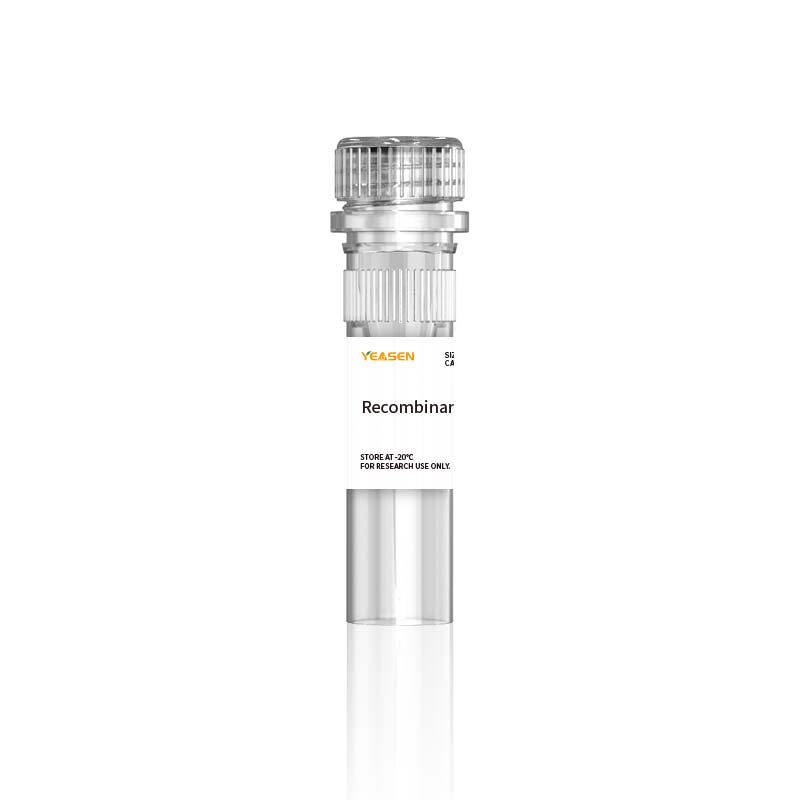Description
CD27 ligand (CD27L), also named CD70, is a type II transmembrane glycoprotein belonging to the TNF superfamily (TNFSF) and has been designated TNFSF7. Human CD27L cDNA encodes a 193 aa residue protein with a 17 aa N-terminal cytoplasmic domain, a 21 aa transmembrane domain and a 155 aa C-terminal extracellular domain. Human and mouse CD27L share approximated 56% aa sequence identity. CD27L is expected to exist as non-covalent homotrimers. CD70 is constitutively expressed on medullary thymic epithelial cells (mTECs) in human and mouse and on certain unconventional APCs in the mouse intestine. CD70 is also exclusively expressed on DCs, B cells, conventional- and regulatory T cells and NK cells but only after their activation. CD70 expression is highly regulated by antigen through Pattern Recognition Receptors (PRRs), T cell and B cell antigen receptors (8), and further tuned by cytokines such as IL-1 alpha.
Specifications
|
Synonyms |
CD70 molecule; CD70; TNFSF7; CD27 Ligand; CD27-L; CD27LG;Ki-24 antigen; TNFSF7G |
|
Uniprot No. |
|
|
Source |
Recombinant Human CD27 Ligand/CD70 Protein is expressed from HEK293 Cells with hFc at the N-terminal. It contains Gln39-Pro193. |
|
Molecular Weight |
The protein has a predicted MW of 42.7 kDa. Due to glycosylation, the protein migrates to 60-80 kDa based on Tris-Bis PAGE result. |
|
Physical Appearance |
Sterile Filtered White lyophilized (freeze-dried) powder. |
|
Purity |
> 95% as determined by SDS-PAGE and HPLC. |
|
Activity |
ELISA Data:Immobilized Human CD27, His Tag at 0.5μg/ml (100μl/Well) on the plate. Dose response curve for Human CD27 Ligand, hFc Tag with the EC50 of 37.9ng/ml determined by ELISA. |
|
Endotoxin |
< 1.0 EU per 1μg of the protein by the LAL method. |
|
Formulation |
Lyophilized from 0.22 μm filtered solution in PBS (pH 7.4). Normally 5% trehalose is added as protectant before lyophilization. |
|
Reconstitution |
Centrifuge tubes before opening. Reconstituting to a concentration more than 100 μg/mL is recommended (usually we use 1 mg/mL solution for lyophilization). Dissolve the lyophilized protein in distilled water. |
Storage
The product should be stored at -20~-80℃ for 1 year from date of receipt.
2-7 days, 2 ~8 °C under sterile conditions after reconstitution.
3-6 months, -20~-80℃ under sterile conditions after reconstitution.
Recommend to aliquot the protein into smaller quantities when first used and avoid repeated freeze-thaw cycles.
Note
1. Avoid repeated freezing and thawing.
2. Please operate with lab coats and disposable gloves, for your safety.
3. This product is for research use only.
Product Data
HB220624
Payment & Security
Your payment information is processed securely. We do not store credit card details nor have access to your credit card information.
Inquiry
You may also like
FAQ
The product is for research purposes only and is not intended for therapeutic or diagnostic use in humans or animals. Products and content are protected by patents, trademarks, and copyrights owned by Yeasen Biotechnology. Trademark symbols indicate the country of origin, not necessarily registration in all regions.
Certain applications may require additional third-party intellectual property rights.
Yeasen is dedicated to ethical science, believing our research should address critical questions while ensuring safety and ethical standards.


